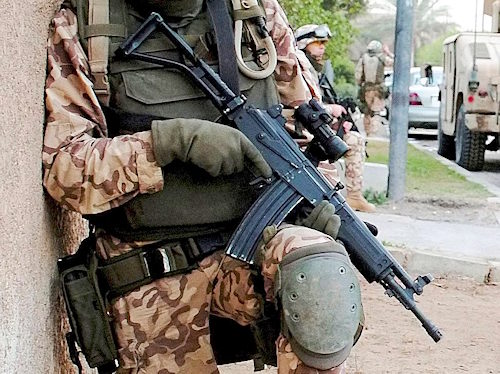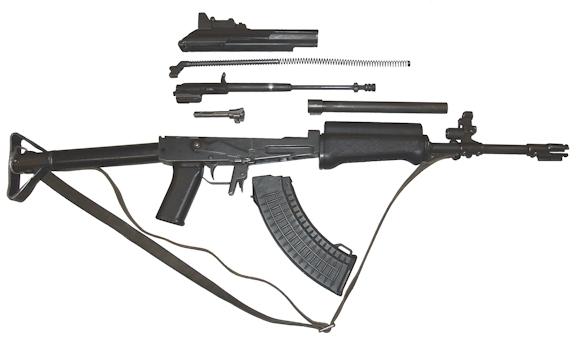Throughout the Cold War period and to the present day, the AK-47 / AKM assault rifle series (including locally made models) were the standard weapons of the Warsaw Pact armies and all guerrilla groups. of socialist origin controlled by Moscow.
However, not many people know that the Kalashnikov mechanical system went through the Iron Curtain and was used to make other variants of assault rifles.
In chronological order we can cite the Finnish Valmet Rk.62 (opening photo) in caliber 7,62x39. In the 50s of the last century the Finnish Army needed a modern assault rifle, commissioned the then state company Valmet to make a national version of the Soviet Ak-47. Once the license was acquired, the Rk.1962 model was adopted in 62. Obviously, compared to Kalashnikov, there were many differences that mainly concerned ergonomics and aims.
The adoption of a flame extinguisher (with three prongs) in order to attenuate the flame (the Ak-47 does not have one) and therefore reduce the possibility of detection. The stock is composed of a simple metal tube with a steel band folded in the terminal part, to form the butt plate (versions were produced with the possibility of folding it sideways).
The latest version is Rk.95, used only by the special forces and other Finnish departments that form the rapid reaction force. It is characterized by a tip-up metal stock (very similar to that of the FAL Para), a large cylindrical flame extinguisher and the use of polymer magazines (among other things already in use for some years).
 Inspired by Valmet is the Israeli Galil (photo) in 5,56x45 caliber. Introduced in service since 1973, it will never be distributed to troops in large quantities, as Israel could have American aid by receiving, among other things, large quantities of M-16A1 and CAR-15 rifles.
Inspired by Valmet is the Israeli Galil (photo) in 5,56x45 caliber. Introduced in service since 1973, it will never be distributed to troops in large quantities, as Israel could have American aid by receiving, among other things, large quantities of M-16A1 and CAR-15 rifles.
There is no doubt that Galil is directly derived from Ak-47 however it will always be presented as an original project, being produced under license in South Africa, by Vektor, under the name of R-4; in Colombia, produced by Indumil, other models inspired by it will later appear in the Balkans.
It is clear that geopolitical positioning is often relevant when choosing about the adoption of an assault rifle by a country. Finland, being a non-aligned country, was able to afford to adopt an economic but at the same time functional solution, copying the mechanical characteristics of the Kalashnikov from the Soviets, while Israel, although making a national rifle, preferred to use American supplies, not certainly better from a qualitative point of view but certainly economically less expensive.
Photo: ZeroOne / web












